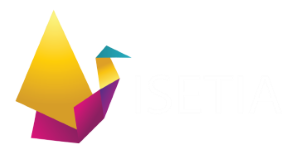 ISETIA FINANCE
ISETIA FINANCE
ISETIA FINANCE MODULE HELPS SPEED UP AN ENTERPRISE’S FINANCIAL PROCESSES AND OFFERS AUDITABLE REVENUE MANAGEMENT AND EXPENSE MANAGEMENT. IT ALSO ENABLES COMPANY CLEARLY COMMUNICATE FINANCIAL INFORMATION TO EXTERNAL PARTIES, INCLUDING VENDORS AND CUSTOMERS. ALL TYPE OF ACTIVITIES SUCH AS PLANNING, ESTIMATING, BUDGETING, FINANCING MANAGING AND CONTROLLING COSTS CAN BE COMPLETED IN ISETIA. ISETIA COST MANAGEMENT MODULE COVERS THE FULL LIFE CYCLE OF A PROJECT FROM THE INITIAL PLANNING PHASE TOWARDS MEASURING THE ACTUAL COST PERFORMANCE AND PROJECT COMPLETION. SO IF YOU NEED VALUABLE HELP TO DEFINE COST CONTROL PROCEDURES, TRACK AND APPROVE CHANGES AND APPLY ANALYSES ALSO IF YOU REALLY WANT TO KNOW HOW MUCH YOUR PROJECT WILL COST, AND HOW MUCH IT ACTUALLY COSTS, YOU SHOULD USE ISETIA.
BENEFITS
FINANCIAL TRANSPARENCY The GL and analytics dashboard give authorized users the information they need to understand their company’s financials.
IMPROVED PRODUCTIVITY Once a company automates its manual and time-consuming finance processes, productivity will improve.
REDUCE HUMAN ERRORS Accounting errors, including data entry mistakes, are easier to detect and avoid.
BETTER-INFORMED PLANNING AND BUDGETING ISETIA Finance module analytics and reporting functions help to forecast costs and revenue and produce more accurate budgets.
TRACKING AND ORGANIZING FINANCIAL DOCUMENTS The digital format means an organization is less likely to misplace or lose documents. In addition, documents are usually filed in the proper place automatically.
NO MISSED PAYMENTS BI notifies a company about upcoming payments. The company can also have payments plan forecast.
CENTRALIZATION A company can access its financial information in one place.
INTEGRATION Because ISETIA Finance module integrates with other ERP solutions as well as Planning solutions also business systems, an organization has access to key data, such as sales figures and marketing budgets.
ISETIA FINANCE MODULE USE CASES ALL
A business use case is a common task or workflow carried out in software. Here are some examples from ISETIA Finance:
PAYABLES Invoice processing, cash management.
RECEIVABLES Billing, extending credit and matching invoices with cash received.
REVENUE RECOGNITION Recording revenue that is received over time rather than in a single transaction. Strict regulations require this revenue to be recognized properly in the general ledger and income statement.
RECONCILIATION Automatically reconciling account discrepancies to avoid delays in the monthly close.
COLLECTIONS Analyzing receivables and customer accounts to identify payment risks and executing steps to encourage timely collection
ASSIGN COSTS TO ANY UNIT OF WORK – from the smallest up to a largest one. Expenses may be assigned directly to WBS element, ISETIA Board®, ToDo or task which make a project. They may be also assigned to portfolios, programs or project. Just allocate them where they were incurred. Each work unit, whether elementary or aggregated, may have any number of expenses appointed to. CLASSIFY AND TRACK. Costs may be classified according to any list of categories which you have in your company or in your project. You may separately plan and track, for instance salary expenses, assets, materials etc. PLAN AND PERFORM. Usually firstly you plan an expense and later on perform some transactions, like buying or paying for service after which the expense becomes actual. Sometimes you pay in tranches. In addition you may create one or more actual charges for a planned cost. In each of actual payments assigned to given planned expenses you provide standard data like quantity, unit price, description etc. EXERCISE CONTROL OVER YOUR BUDGET. ISETIA automatically summarizes planned and actual expenses and presents percentage of work execution. The other type of cost control is the mechanism of remaining expenses. ISETIA knows what amount of money was planned and how much has been already spent. The amount of remaining budget is calculated on the basis of these values. When you exceed planned budget the system raises alarm but allows for next spending. The prices might have changed, after all. Cost control may be performed in several places in ISETIA. The simplest way to have control over your budget is just browsing expenses as they were input to ISETIA. You may see and manage them from the side of work units, to which they were ascribed. Moreover in ISETIA Dashboard® there is a portlet designed just to summarize your expenses sorted according to requested categories.
REPORT WITH IMAGINATION. You may report costs in tabular, linear, pie chart and other types of reports by using extraordinary visualization forms. ATTACH DOCUMENTS. Expenses may have documents related to them. There are several types of documentation which can be relevant: orders, work specifications, invoices etc. So you do not have to search through all the document repository to find any paper related to your expense. There may be documents related to costs like orders, invoices, detailed specifications and so on. You may assign them to any expense thus having full information about cost stored in one place. TAYLOR YOUR COST ENVIRONMENT. ISETIA cost management module is very flexible to be aligned with your needs. You may define some attributes as ISETIA dictionaries. There are expense categories, units of measures which can be easily established in it. There are plenty of attributes characterizing your expenses. You have data identifying them like identifier, name and description etc. Purchased items can be defined by their unit price and quantity. Its product makes the amount of price. You may define as well the unit of measure of purchased goods. There are also planned dates related to expenses, their currency and responsible person.


